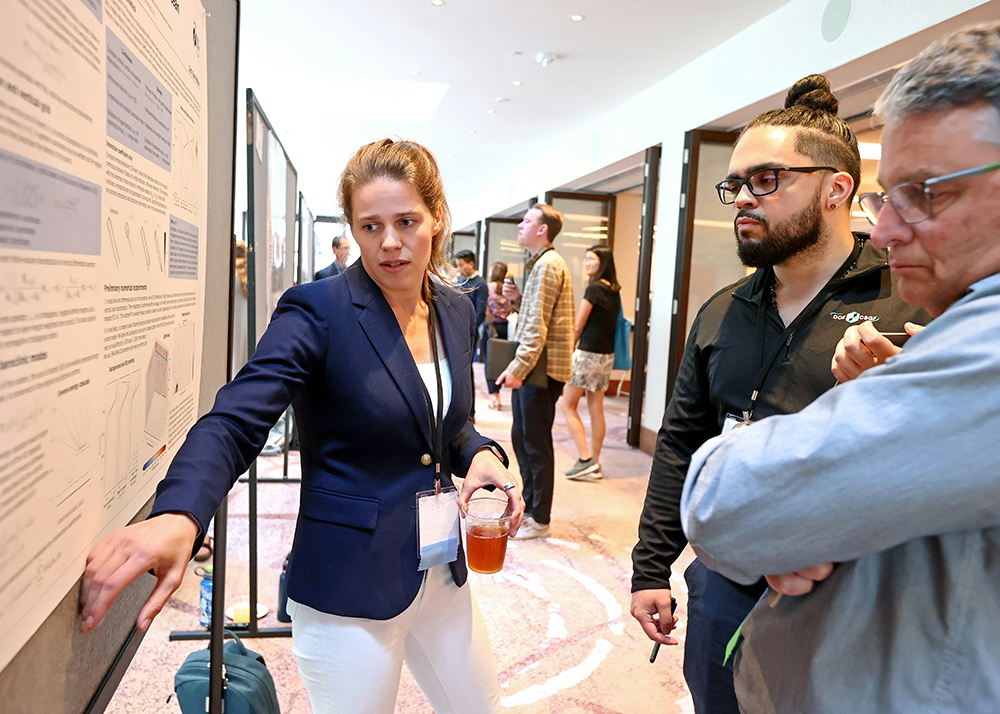 The annual Fellows’ Poster Session affords attendees a unique opportunity to gain exposure to the breadth of research supported by the DOE CSGF program. Each fellow is provided space to present their latest findings. The format allows all attendees — including fellow presenters — to ask questions of and engage in discussion with one another.
The annual Fellows’ Poster Session affords attendees a unique opportunity to gain exposure to the breadth of research supported by the DOE CSGF program. Each fellow is provided space to present their latest findings. The format allows all attendees — including fellow presenters — to ask questions of and engage in discussion with one another.
